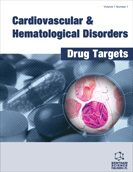Abstract
Apolipoprotein B48 (apoB48)-containing triglyceride-rich lipoproteins are atherogenic and therefore it is important to understand factors that regulate their metabolism in the intestine. Insulin resistant states are associated with increased intestinal output of apo B48, but the mechanistic studies explaining this overproduction have relied heavily on models of diet-induced insulin resistance. There is evidence that glucagon-like peptide (GLP) secretion is diminished in insulin resistant and diabetic states, which may have implications for postprandial lipid secretion. This review presents a survey of studies on GLPs and intestinal lipoprotein metabolism, along with some insights into the net physiological significance of GLP action in postprandial lipoprotein metabolism. Studies with GLP-1 receptor agonists and dipeptidyl peptidase-IV inhibitors have indicated that GLP-1 in pharmacological and physiological doses can inhibit intestinal TRL production. On the other hand, GLP-2 has an acute stimulatory effect on intestinal apoB48 secretion. Modulating GLP action may serve as a strategy to improve postprandial dyslipidemia in insulin resistant states.
Keywords: Apolipoprotein B48, insulin resistance, postprandial dyslipidemia
Cardiovascular & Hematological Disorders-Drug Targets
Title:Regulation of Intestinal Chylomicron Production by Glucagon-Like Peptides
Volume: 12 Issue: 2
Author(s): Joanne Hsieh and Khosrow Adeli
Affiliation:
Keywords: Apolipoprotein B48, insulin resistance, postprandial dyslipidemia
Abstract: Apolipoprotein B48 (apoB48)-containing triglyceride-rich lipoproteins are atherogenic and therefore it is important to understand factors that regulate their metabolism in the intestine. Insulin resistant states are associated with increased intestinal output of apo B48, but the mechanistic studies explaining this overproduction have relied heavily on models of diet-induced insulin resistance. There is evidence that glucagon-like peptide (GLP) secretion is diminished in insulin resistant and diabetic states, which may have implications for postprandial lipid secretion. This review presents a survey of studies on GLPs and intestinal lipoprotein metabolism, along with some insights into the net physiological significance of GLP action in postprandial lipoprotein metabolism. Studies with GLP-1 receptor agonists and dipeptidyl peptidase-IV inhibitors have indicated that GLP-1 in pharmacological and physiological doses can inhibit intestinal TRL production. On the other hand, GLP-2 has an acute stimulatory effect on intestinal apoB48 secretion. Modulating GLP action may serve as a strategy to improve postprandial dyslipidemia in insulin resistant states.
Export Options
About this article
Cite this article as:
Hsieh Joanne and Adeli Khosrow, Regulation of Intestinal Chylomicron Production by Glucagon-Like Peptides, Cardiovascular & Hematological Disorders-Drug Targets 2012; 12 (2) . https://dx.doi.org/10.2174/1871529X11202020092
| DOI https://dx.doi.org/10.2174/1871529X11202020092 |
Print ISSN 1871-529X |
| Publisher Name Bentham Science Publisher |
Online ISSN 2212-4063 |
 26
26
- Author Guidelines
- Bentham Author Support Services (BASS)
- Graphical Abstracts
- Fabricating and Stating False Information
- Research Misconduct
- Post Publication Discussions and Corrections
- Publishing Ethics and Rectitude
- Increase Visibility of Your Article
- Archiving Policies
- Peer Review Workflow
- Order Your Article Before Print
- Promote Your Article
- Manuscript Transfer Facility
- Editorial Policies
- Allegations from Whistleblowers
- Announcements
Related Articles
-
Anti-Vascular Endothelial Growth Factor Drug Treatment of Diabetic Macular Edema: The Evolution Continues
Current Diabetes Reviews Role of Micronutrients on Subclinical Atherosclerosis Micronutrients in Subclinical Atherosclerosis
Current Pharmaceutical Design 3D-QSAR analysis of MCD inhibitors by CoMFA and CoMSIA
Combinatorial Chemistry & High Throughput Screening Glycaemic Control: A Balancing Act or A Different Approach?
Current Diabetes Reviews The Effect of Risk Factor Changes on Peripheral Arterial Disease and Cardiovascular Risk
Current Drug Targets - Cardiovascular & Hematological Disorders Genus Euonymus: Chemical and Pharmacological Perception
Mini-Reviews in Organic Chemistry History and Milestones of Mouse Models of Autoimmune Diseases
Current Pharmaceutical Design Alzheimer’s Disease And Type 2 Diabetes: Exploring The Association To Obesity And Tyrosine Hydroxylase
CNS & Neurological Disorders - Drug Targets Evidence of Lifestyle Modification in the Management of Hypercholesterolemia
Current Cardiology Reviews Genetic Association Studies: An Information Content Perspective
Current Genomics Prognostic Significance of Homocysteine Levels in Acute Ischemic Stroke: A Prospective Cohort Study
Current Neurovascular Research Membrane and Soluble Forms of Endoglin in Preeclampsia
Current Molecular Medicine Cardiovascular Disease in Patients with Diabetic Nephropathy
Current Molecular Medicine The First Approved Agent in the Glitazar’s Class: Saroglitazar
Current Drug Targets Pharmacologic Therapy in Growth Hormone Disorders and the Heart
Current Medicinal Chemistry Diagnostic Value of Assessment of Serum Cortisol, Hepcidin and Thyroid Hormones Levels in Neonates with Late-Onset Sepsis
Infectious Disorders - Drug Targets Development and Clinical Application of Peptide-Based Radiopharmaceuticals
Current Pharmaceutical Design Role of Opioid Antagonists in the Treatment of Women with Glucoregulation Abnormalities
Current Pharmaceutical Design The Frequency and Risk Factors of Diabetic Foot Ulcer Recurrence Among Jordanian Patients with Diabetes
Current Diabetes Reviews Significant Correlation between Cystatin C, Cerebral Infarction, and Potential Biomarker for Increased Risk of Stroke
Current Neurovascular Research


























